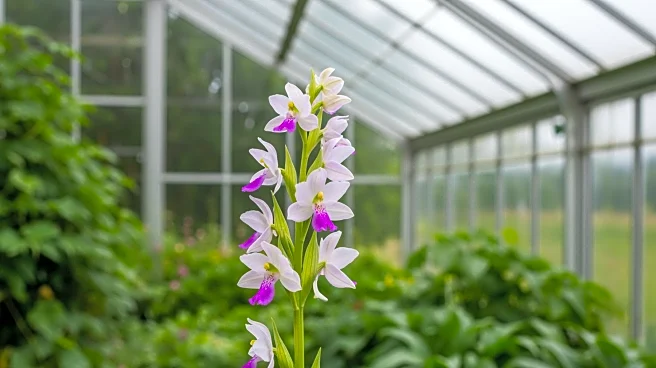What's Happening?
Forestry England has launched a new resilience strategy aimed at improving the productivity and ecological health of the nation's woodlands. The strategy, built on decades of experience and scientific
research, focuses on nature recovery, timber production, and silviculture. Key themes include assessing forest resilience at a local level, diversifying tree species and forest structures, and restoring ecological foundations. The strategy is designed to help forests withstand disturbances and provide greater value to society. It follows a horizon scan research project conducted with the University of Cambridge, which highlighted potential ecosystem collapse in UK woodlands without decisive action.
Why It's Important?
The resilience strategy is crucial for ensuring the long-term health and productivity of UK woodlands, which are vital for biodiversity, recreation, and sustainable timber production. By addressing vulnerabilities to pests, diseases, and extreme weather, the strategy aims to safeguard these ecosystems for future generations. The initiative reflects a proactive approach to forest management, emphasizing the importance of healthy forests for wildlife habitats and human enjoyment. The strategy's focus on scientific research and innovative management practices underscores the need for adaptive measures in response to environmental challenges.
What's Next?
Forestry England will implement the strategy across its 1,500 woodlands, guiding production and planting decisions based on a list of 30 priority tree species. The organization will continue to monitor forest resilience at a local level, adapting management practices as needed. Collaboration with scientific institutions and stakeholders will be essential to address emerging challenges and opportunities. The strategy sets the stage for ongoing efforts to enhance forest resilience, ensuring that UK woodlands can thrive in the face of environmental changes.
Beyond the Headlines
The resilience strategy highlights the interconnected nature of forest ecosystems, emphasizing the role of biodiversity in maintaining ecological health. By focusing on species groups and habitats that impact ecosystem function, the strategy aims to restore ecological foundations and nurture wider ecosystems. This approach reflects a broader understanding of forest management, recognizing the importance of soil health, fungi networks, and keystone species in sustaining healthy forests.











